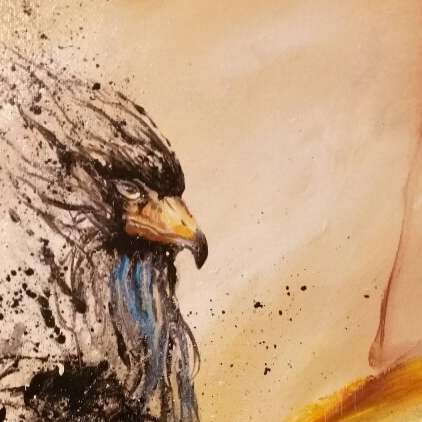
As a new artist it can be boost to the ego when someone asks you to do a commission. They usually don’t use that word in their request but it is inferred. “I love your artwork! Can you paint my dog?”
And of course, to the young artist at least, the answer comes tumbling out, “Sure!” If the artist is a little more mature or experience, there probably is a little more hesitancy. Questions are asked for clarification or maybe the offer is just refused.
Whatever the situation, it is a nice compliment to be asked. And it can turn into a great business for the artist. If it is what the artist wants, enjoys and excels at. At some point, you will probably be asked to do a special painting for someone. You need to be aware of several things going forward. The following items are aimed at the new artist or the artist just entering the marketing side with his or her artwork.
1) There is stress involved with doing commission work. Can you handle it? Your customer will have expectations. There are the price you will charge, the time it takes and the satisfaction with the end product. How you control and work with those expectations will determine your stress. The easiest way is to figure it is this way: If your art is going to sell for $50 or $500 or $5000 do you need the money bad enough to put up with the stress for that amount? I have a woodworking friend that does fantastic work. His pieces sell for about $500 or more. But he won’t do a commission. Why? He does not want to worry that after hours of work that the customer might not be pleased with his requested art. He can pass on $500+ and be stress free. No sleep loss, no jitters. No worries. Even though I, personally, think that anybody would love his finished piece. But that is his choice. And I know about 5 artists that think that way. Take my art that I do or none at all.
2) If you decide to do a commission, you need to be prepared. Communications is now the important key. This has to be controlled by the artist. I realize that it may be difficult but it is important for both the artist and the buyer. Assumptions cannot be made. I suggest a contract of sorts. Not an evil corporation, lawyer drawn-up type contract but more of a check list type of “Here’s What To Expect and What You’ll Get” type of thing. If it is your first commission, it may be the client’s first one too. But get it signed and give them a copy.
3) Don’t quote a price until you get a good idea of what the person wants. “How much to do my cat?” “It’ll be $95.” “Great! I want it with her new five kittens and I want it on a 18x24 framed. OH, and I’ll be holding them all in my arms.” Communications.
4) Realize that with the commission, the mentioned check list and the other items we’ll be talking about on this list, that it brings you into the ring of professionalism and being a professional artist. That is a big step.
5) Yes, I realize that you can skip some of the steps. If you plan on going into another profession and not becoming an artist, then it may not be worth the effort. Or you may be thinking, “I don’t want to come across as some uptight businessman, I’m an artist!” You can rest assure that da Vinci or Banksy or Gubler didn’t think they were above asking for a deposit or a contract. You don’t have to sound uptight, it is all in the approach. “Hey, I’m pretty busy. I’m gonna need a 50% deposit to start on this. You know, to put you in line with my other commissions, buy supplies and all.” Or make up your own wordage of course.
6) Your style: In your check list, it’ll be mentioned but you will cover this when you talk to your client also. And when you have them sign it. Your commission is a work of art. It is your work of art. You have a style to your art. The client has to expect that style in their commission. You will be painting through your eyes and talent. You will not be painting through their eyes. Ninety-five percent or more of your clients will understand this. But five percent or less, usually first timers, might not expect this. They will have an image in their mind and that is what they expect. Your discussion while going over the check list is to insure that they know and expect that their work of art will be your interpretation of what you are doing.
There we are. A simple request to paint their kitty became kind of complicated. Remember, we are only looking out for you. In Part II we will tell you how to protect yourself even more and be the professional you want to be.




